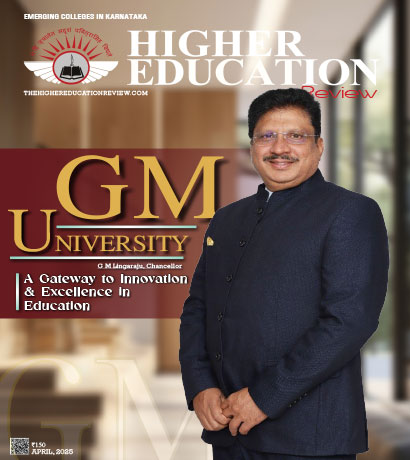How Is Generative AI Profoundly Transforming The World Of Education

Anthony Hie, Chief Innovation & Digital Officer, Excelia
It is now indisputable that generative artificial intelligence is profoundly transforming the world of education. OpenAI has recognized this and is launching ChatGPT Edu, a range of services designed specifically for education. For many years now, the digital giants have been offering versions specifically for education, with the underlying aim of extending their influence and thereby accelerating their growth. The goal of OpenAI is to increase the take-up of its artificial intelligence by leveraging educational communities and targeting students in particular.
ChatGPT Edu’s potential for higher education institutions is vast and promising. ChatGPT Edu is paving the way for higher education to adopt AI more quickly, heralding a new era of learning and research. This generative AI uses OpenAI’s flagship model, GPT-4o (‘o’ stands for ‘Omni’), which excels at text interpretation, coding, and mathematics. The educational community can create customised versions of ChatGPT and share them within educational workspaces.
It offers significantly higher message limits than the free version of ChatGPT and has improved language capabilities both in terms of quality and speed, with over 50 languages supported. To improve stakeholder acceptance, OpenAI states that security and data privacy have been strengthened with solid administrative controls such as group permissions, SSO (Single Sign-On), SCIM (System for Cross-domain Identity Management), and GPT management. According to OpenAI, conversations and data are not used to train AI models. So, what are the benefits of an education-specific version for Sam Altman’s company?
The importance of students as ‘early adopters’
Students are often considered to be ‘early adopters.’ They embrace new technologies, methods, and products far more quickly than most other users. Such students are often curious, at the forefront of innovation, and receptive to change. Their comments and opinions are invaluable for companies in general, but especially for OpenAI, as they provide rapid feedback on the functionalities, advantages, and disadvantages of new products.
In a ‘test and learn’ approach, early adopters are a veritable goldmine that must be reached (and capitalized on) as a matter of priority. This is a community which OpenAI can rely on to influence the artificial intelligence adoption curve. In fact, by focusing on students, OpenAI can accelerate the adoption of artificial intelligence in the field of education, as well as in the corporate world through reverse mentoring. Reverse mentoring can occur during internships or when young graduates act as mentors for senior managers, sharing their knowledge of innovative trends such as AI, digital transformation, or even innovation strategies - a carefully considered strategic future investment for OpenAI.
Towards a more holistic approach to learning
However, as is possible with generative AI, do students really need to know how to write a rigidly structured dissertation in paragraphs? Or do they need to understand how to approach a concept, break it down, and organise it into more easily comprehensible parts? Using ChatGPT Edu will certainly offer the opportunity to explore more creative and flexible approaches to learning. But institutions and teachers need to encourage students to think more holistically and develop these essential skills for their future. Students, as early adopters, are sure to play a key role in the transformation of the world of education and, by releasing its ChatGPT Edu version, OpenAI has clearly understood this. We can no doubt expect further disruptive changes in AI in the months to come.
ChatGPT Edu’s potential for higher education institutions is vast and promising. ChatGPT Edu is paving the way for higher education to adopt AI more quickly, heralding a new era of learning and research. This generative AI uses OpenAI’s flagship model, GPT-4o (‘o’ stands for ‘Omni’), which excels at text interpretation, coding, and mathematics. The educational community can create customised versions of ChatGPT and share them within educational workspaces.
It offers significantly higher message limits than the free version of ChatGPT and has improved language capabilities both in terms of quality and speed, with over 50 languages supported. To improve stakeholder acceptance, OpenAI states that security and data privacy have been strengthened with solid administrative controls such as group permissions, SSO (Single Sign-On), SCIM (System for Cross-domain Identity Management), and GPT management. According to OpenAI, conversations and data are not used to train AI models. So, what are the benefits of an education-specific version for Sam Altman’s company?
The importance of students as ‘early adopters’
Students are often considered to be ‘early adopters.’ They embrace new technologies, methods, and products far more quickly than most other users. Such students are often curious, at the forefront of innovation, and receptive to change. Their comments and opinions are invaluable for companies in general, but especially for OpenAI, as they provide rapid feedback on the functionalities, advantages, and disadvantages of new products.
In a ‘test and learn’ approach, early adopters are a veritable goldmine that must be reached (and capitalized on) as a matter of priority. This is a community which OpenAI can rely on to influence the artificial intelligence adoption curve. In fact, by focusing on students, OpenAI can accelerate the adoption of artificial intelligence in the field of education, as well as in the corporate world through reverse mentoring. Reverse mentoring can occur during internships or when young graduates act as mentors for senior managers, sharing their knowledge of innovative trends such as AI, digital transformation, or even innovation strategies - a carefully considered strategic future investment for OpenAI.
Towards a more holistic approach to learning
However, as is possible with generative AI, do students really need to know how to write a rigidly structured dissertation in paragraphs? Or do they need to understand how to approach a concept, break it down, and organise it into more easily comprehensible parts? Using ChatGPT Edu will certainly offer the opportunity to explore more creative and flexible approaches to learning. But institutions and teachers need to encourage students to think more holistically and develop these essential skills for their future. Students, as early adopters, are sure to play a key role in the transformation of the world of education and, by releasing its ChatGPT Edu version, OpenAI has clearly understood this. We can no doubt expect further disruptive changes in AI in the months to come.

